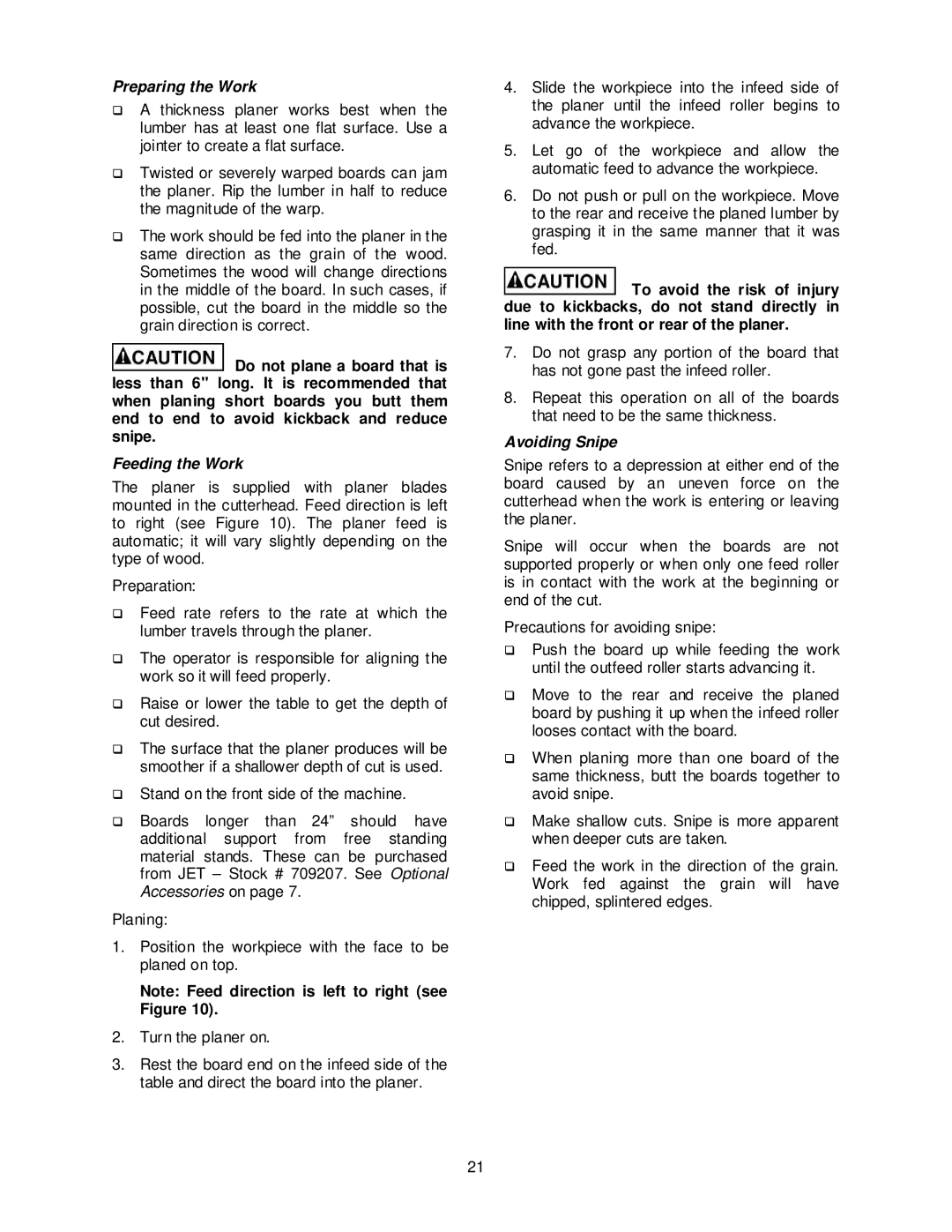Preparing the Work
!A thickness planer works best when the lumber has at least one flat surface. Use a jointer to create a flat surface.
!Twisted or severely warped boards can jam the planer. Rip the lumber in half to reduce the magnitude of the warp.
!The work should be fed into the planer in the same direction as the grain of the wood. Sometimes the wood will change directions in the middle of the board. In such cases, if possible, cut the board in the middle so the grain direction is correct.
![]() Do not plane a board that is less than 6" long. It is recommended that when planing short boards you butt them end to end to avoid kickback and reduce snipe.
Do not plane a board that is less than 6" long. It is recommended that when planing short boards you butt them end to end to avoid kickback and reduce snipe.
Feeding the Work
The planer is supplied with planer blades mounted in the cutterhead. Feed direction is left to right (see Figure 10). The planer feed is automatic; it will vary slightly depending on the type of wood.
Preparation:
!Feed rate refers to the rate at which the lumber travels through the planer.
!The operator is responsible for aligning the work so it will feed properly.
!Raise or lower the table to get the depth of cut desired.
!The surface that the planer produces will be smoother if a shallower depth of cut is used.
!Stand on the front side of the machine.
!Boards longer than 24” should have additional support from free standing material stands. These can be purchased from JET – Stock # 709207. See Optional Accessories on page 7.
Planing:
1.Position the workpiece with the face to be planed on top.
Note: Feed direction is left to right (see Figure 10).
2.Turn the planer on.
3.Rest the board end on the infeed side of the table and direct the board into the planer.
4.Slide the workpiece into the infeed side of the planer until the infeed roller begins to advance the workpiece.
5.Let go of the workpiece and allow the automatic feed to advance the workpiece.
6.Do not push or pull on the workpiece. Move to the rear and receive the planed lumber by grasping it in the same manner that it was fed.
![]() To avoid the risk of injury due to kickbacks, do not stand directly in line with the front or rear of the planer.
To avoid the risk of injury due to kickbacks, do not stand directly in line with the front or rear of the planer.
7.Do not grasp any portion of the board that has not gone past the infeed roller.
8.Repeat this operation on all of the boards that need to be the same thickness.
Avoiding Snipe
Snipe refers to a depression at either end of the board caused by an uneven force on the cutterhead when the work is entering or leaving the planer.
Snipe will occur when the boards are not supported properly or when only one feed roller is in contact with the work at the beginning or end of the cut.
Precautions for avoiding snipe:
!Push the board up while feeding the work until the outfeed roller starts advancing it.
!Move to the rear and receive the planed board by pushing it up when the infeed roller looses contact with the board.
!When planing more than one board of the same thickness, butt the boards together to avoid snipe.
!Make shallow cuts. Snipe is more apparent when deeper cuts are taken.
!Feed the work in the direction of the grain. Work fed against the grain will have chipped, splintered edges.
21
